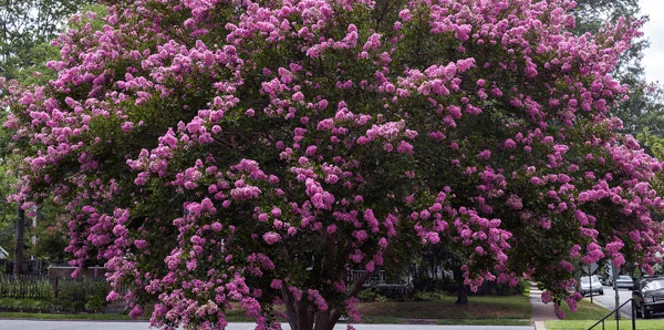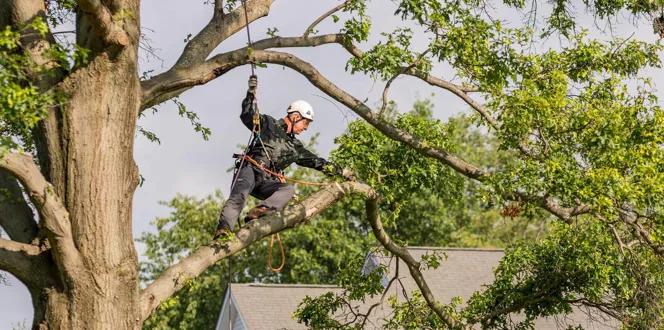In addition to tall trees, brightly colored perennials, and ornamental grasses that blow in the breeze, a landscape is not complete without a nice mix of shrubs.
These plants bring that middle-height element to your home landscape, providing some shade and soil stability, as well as adding some privacy or another addition of color and texture to your space.
Whether you choose evergreen or deciduous shrubs, they can be used in many ways – from flanking entryways to anchoring landscape beds, or even providing some additional cover to turn an unsightly area into a more eye-pleasing one.
Obviously, though, shrubs require proper care just like your other landscape plants, and that includes shrub trimming.
As shrubs grow, you might notice certain varieties can get quite unwieldy quickly without proper pruning. But you might be asking yourself a number of questions as temperatures warm up, including: Can shrubs be trimmed in summer? When should shrubs be cut back? When is it too hot to trim shrubs?
Let’s talk about correct timing when it comes to shrub trimming so you can have shrubs that continue to provide your home landscape with amazing benefits.
Can You Trim Shrubs In The Summer?
You want to know your shrub’s growth habits and bloom time to get a good sense of their ideal prune time.
With shrubs, trimming at the incorrect time can be detrimental to their overall health, increasing potential problems, such as insects and diseases.
- Best time to prune forsythias? Immediately after flowering
- Best time to prune weigela? Lightly in early spring and if needed after bloom
- Best time to prune potentillas? March-early April
- Best time to prune summer-flowering deciduous shrubs? March-early April
- Best time to prune “non-flowering” deciduous shrubs? February-March
When To Trim Spring Flowering Shrubs
Spring flowering bushes typically prefer being trimmed after they have finished blooming.
This way, you can enjoy their floral display, as well as give them time to create new flower buds for the next spring. This timing is best for pruning these plants because they tend to flower on old wood. Some examples of spring flowering bushes that bloom before mid-June include lilac, azalea, wisteria, ninebark, viburnum, and forsythia.
When To Trim Summer Flowering Shrubs
Summer flowering bushes are best trimmed in late winter before growth or leaf out begins.
This is because these shrubs tend to bloom on new wood, which means they set flower buds on the current season’s growth.
Some examples of summer flowering bushes include butterfly bushes, hibiscus, spirea, and some species of hydrangea.
Shrubs can be trimmed in summer, but avoid trimming spring flowering shrubs which have aready grown shoots for the next spring because this will reduce flowering the following year. Instead, trim them immediately after they have finished flowering but before new shoots have begun to grow.
Similarly, avoid trimming summer flowering shrubs before they have flowered and wait to do so until after they have finished flowering.
Non-flowering shrubs can be trimmed at any point in the summer to shape them or to reduce their size, but remember that regrowth will be slow during hot, dry, and stressful conditions.
When pruning, remember to remove old flowers and cut back to healthy outward facing buds. Also, trim away damaged, diseased branches, old wood, or scraggly growth. You can also take out stems and branches to improve congestion and balance your shrub at this time.





